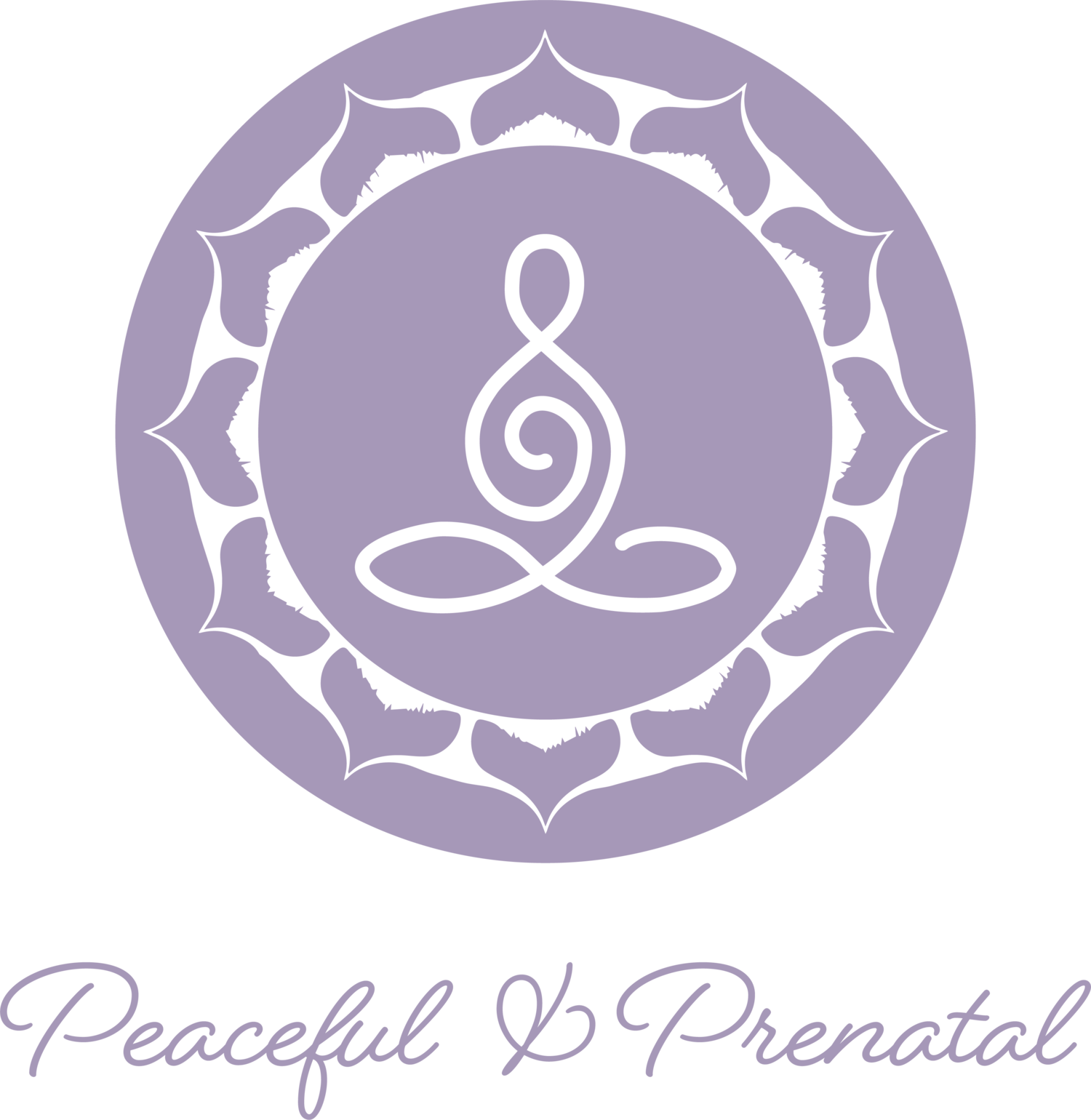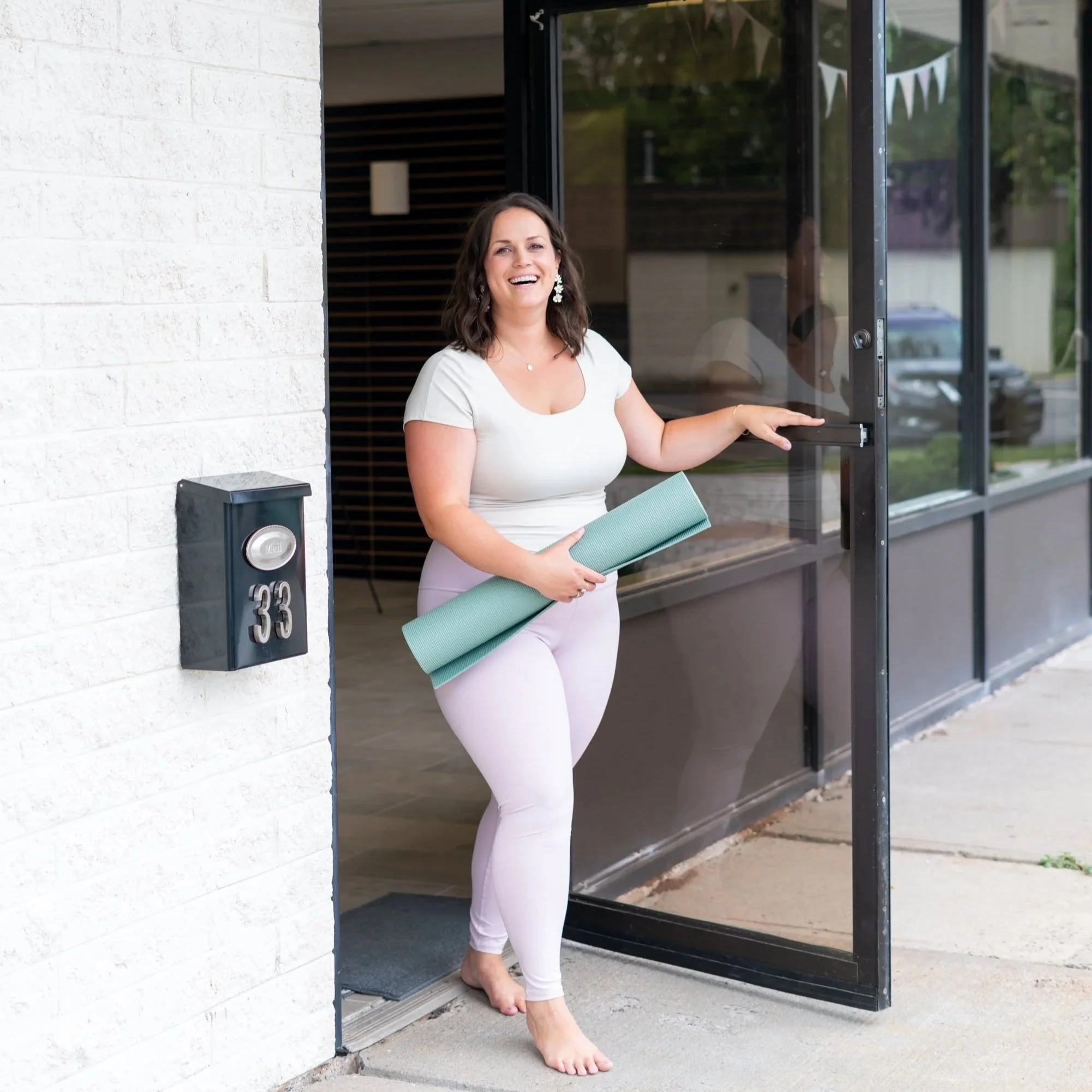Returning to Movement Postpartum
Becoming a mom changes everything. Your body feels different, you’re figuring out new routines, and even your sense of who you are can shift. In those first weeks, it can feel like life is all feedings, diaper changes, and trying to grab a shower. Somewhere in the middle of it all, you start to wonder, “When will I be able to move again? And what will that even look like now?”
Postpartum movement is not about “bouncing back.” It is about rebuilding from the inside out, reconnecting with your body, and giving yourself a chance to feel good again. Let’s break down what’s important when considering returning to exercise after giving birth.
When Is It Safe to Start Moving Again?
One of the most common questions new moms ask me is, “When can I start yoga again?” The answer is, it depends: on your body, your birth, and how your recovery is going.
There is no one-size-fits-all timeline. Every birth is different, and every body heals at its own pace. The most important thing is to listen to your body’s cues, not the pressure from social media or the clock on the calendar.
General Guidelines
For many moms, gentle movement can start anywhere from 4 to 6 weeks postpartum after a vaginal birth, and 6 to 8 weeks after a c-section. This is usually after you have been cleared by your healthcare provider at your postpartum check-up. Some moms are ready a little sooner, and others need more time - its up to you!
Signs You May Be Ready to Start
Your bleeding has stopped. If bleeding returns or increases after starting movement, it is a sign to slow down.
You can walk without pain or heaviness in your pelvic area.
You do not have sharp abdominal pain or pulling sensations near your scar if you had a c-section birth.
You feel ready mentally and emotionally - sometimes that part takes longer than the physical healing.
Starting Small is Still Starting
In the very early weeks, your workouts might look like slow walks around the block, gentle stretching, or focused breathing while holding your baby. These are not just “pre-workout” moves; they are valuable steps in healing. Even five minutes of 360 breathing can help reconnect your pelvic floor and core.
Listening to Your Body’s Cues
Your body will tell you when it is ready, and it will definitely let you know if you are pushing too hard. If you notice increased bleeding, pain, pressure, or swelling after activity, those are signs to rest and scale back. This is not a setback; it is your body communicating what it needs.
It’s Okay if It Takes Longer
Some moms are back to gentle yoga at 4 weeks, others feel ready at 12 weeks or later. If you had complications, a long labor, or a c-section, your timeline may be longer, and that is absolutely okay. The goal is not to “get back” to anything quickly, but to build a foundation that will last.
The Green Light is More Than a Check-Up
Even after your doctor says you are cleared for exercise, you still need to check in with yourself. How do you feel during and after movement? Are you able to recover well between sessions? Do you feel stronger or more fatigued? Trust your answers to those questions as much as you trust the official clearance.
Remember, postpartum yoga is not a race or a challenge. It is an act of care for your body, your mind, and your emotional well-being. You get to set the pace, and you will get stronger in your own time.
Building Strength Back Up
Pregnancy and birth put a lot of strain on your pelvic floor and abdominal muscles. The first step in getting back to movement is not jumping into high-intensity workouts, but instead finding those deep connections again.
Pelvic Floor Recovery
Your pelvic floor is a group of muscles at the base of your pelvis. They support your bladder, bowel, and uterus, and they can get weakened or overly tight during pregnancy and birth. In postpartum yoga, we use gentle breathwork and small, controlled movements to restore strength and function. It is not about endless “Kegels” — it is about learning when to contract, when to release, and how to coordinate those muscles again.
Kegels are short contractions of your pelvic floor and only engage a small part of the pelvic floor. Ideally, you’ll learn how to find the entire pelvic floor to prevent leaking or passing gas uncontrollably. Through pelvic floor pt and postpartum yoga, your mind-body connection will strengthen and lead you back to living a life without limitations (pads, only wearing black pants, etc.)
Healing Your Core After a C-Section Birth
A c-section is major surgery, and your body needs time and the right kind of movement to heal. We start with gentle breath-based work to wake up the transverse abdominis (the abs that run along the side of your body), and your deep core muscles while protecting the healing tissue. This helps with stability, posture, and can even ease back pain. Over time, these movements help you feel stronger and more confident in what your body can do.
Additionally, after a c-section birth, massaging the c-scar can help to break up scar tissue. In this video, I’ll show you how to do this and what it does within the layers of skin, muscle, tissue, and fat.
Your Glutes Matter, Too!
Your glutes are key players in posture, stability, and everyday movement from lifting your baby to pushing a stroller. During pregnancy, your growing belly shifts your center of gravity and often leads to changes in how you stand and walk. Many of us start tucking our pelvis or leaning back to balance the extra weight, which can cause the glutes to “switch off” and weaken over time.
After birth, weakened glutes can contribute to back pain, hip instability, and even make pelvic floor recovery harder, because the glutes help support the pelvis. Postpartum yoga includes gentle, safe glute activation to bring those muscles back online, improve stability, and make daily mom life easier on your body.
Emotional Healing Happens, Too
Yes, postpartum yoga helps you rebuild strength and stability, but it also does something for your heart and mind.
You are not alone
When you are in a class with other moms, there is an unspoken understanding. They get the sleepless nights. They get the constant juggling. And it feels good to be surrounded by people who truly understand. If your baby cries, the entire class gets it. It can be tough getting comfortable with our babies crying when they’re out in public. But until they have signs or words, cries are how they communicate when they’re tired, hungry, or want to be held. You’re allowed to figure that out, alongside everyone else figuring that out, in the studio.
You can slow down
Postpartum yoga is one of the rare spaces where you are encouraged to move at your own pace, to listen to your body, and to rest when you need it. There is no rush. Breathing deeply taps into your nervous system and sends your body a signal: We’re not being chased by a bear, we’re just sleep deprived. When you slow your movement, you’ll often notice your breathing pattern follow suit.
You can connect
To yourself, to your baby, to your community. If you need a place to share without judgment, this is the place for you. If you need a place to be fully present with your baby and not think about the pile of dishes in the sink, this is the place for you. If you need a place to let go of fear, tension, and even tears, this is the place for you. However you seek connection, it can be found if you give yourself permission on the yoga mat.
Studio and At-Home Yoga Classes
Wherever you feel most comfortalbe, I’m ready to meet you there.
Berlin, CT Classes
Together, I can help you with alignment, offer modifications, and even lend a hand with your baby if you need a moment. For baby yoga, I can guide you through safe movements for your little one and give tips for calming them if they get fussy. Plus, you get that real-life connection with other moms in your area.
Virtual Classes
Sometimes, the idea of packing up the diaper bag and leaving the house just feels like too much. Virtual classes let you stay home, feed your baby mid-class if needed, and still get live guidance. I also share recordings so you can practice whenever it works for you.
Both options have their place. Some weeks you might crave in-person connection, other weeks you might need the convenience of rolling out your mat at home. Explore the different options below and see which one calls out to you.
-
In-Person Classes
When you come to the studio, I can help you with alignment, offer modifications, and even lend a hand with your baby if you need a moment. For baby yoga, I can guide you through safe movements for your little one and give tips for calming them if they get fussy. Plus, you get that real-life connection with other moms in your area. -
Virtual Classes
Sometimes, the idea of packing up the diaper bag and leaving the house just feels like too much. Virtual classes let you stay home and still get live guidance. This series includes 40 videos ranging from 15-20 minutes. -
The yoga ball is not just an accessory; it's a tool to accelerate your postpartum recovery. By incorporating the yoga ball into your practice, you'll experience enhanced stability, deeper stretches, and improved posture. It's the perfect prop to assist you on your journey to postpartum wellness. In 6 videos, this transformative series combines the power of postpartum yoga with the therapeutic benefits of using a yoga ball.
Did you find your perfect fit? Whether you want to join us in our Berlin studio, or try out a pre-recorded series, I’ll meet you on the yoga mat!
Don’t miss out on more free educational and relatable perinatal content. Subscribe to my newsletter and let’s be friends on social media





